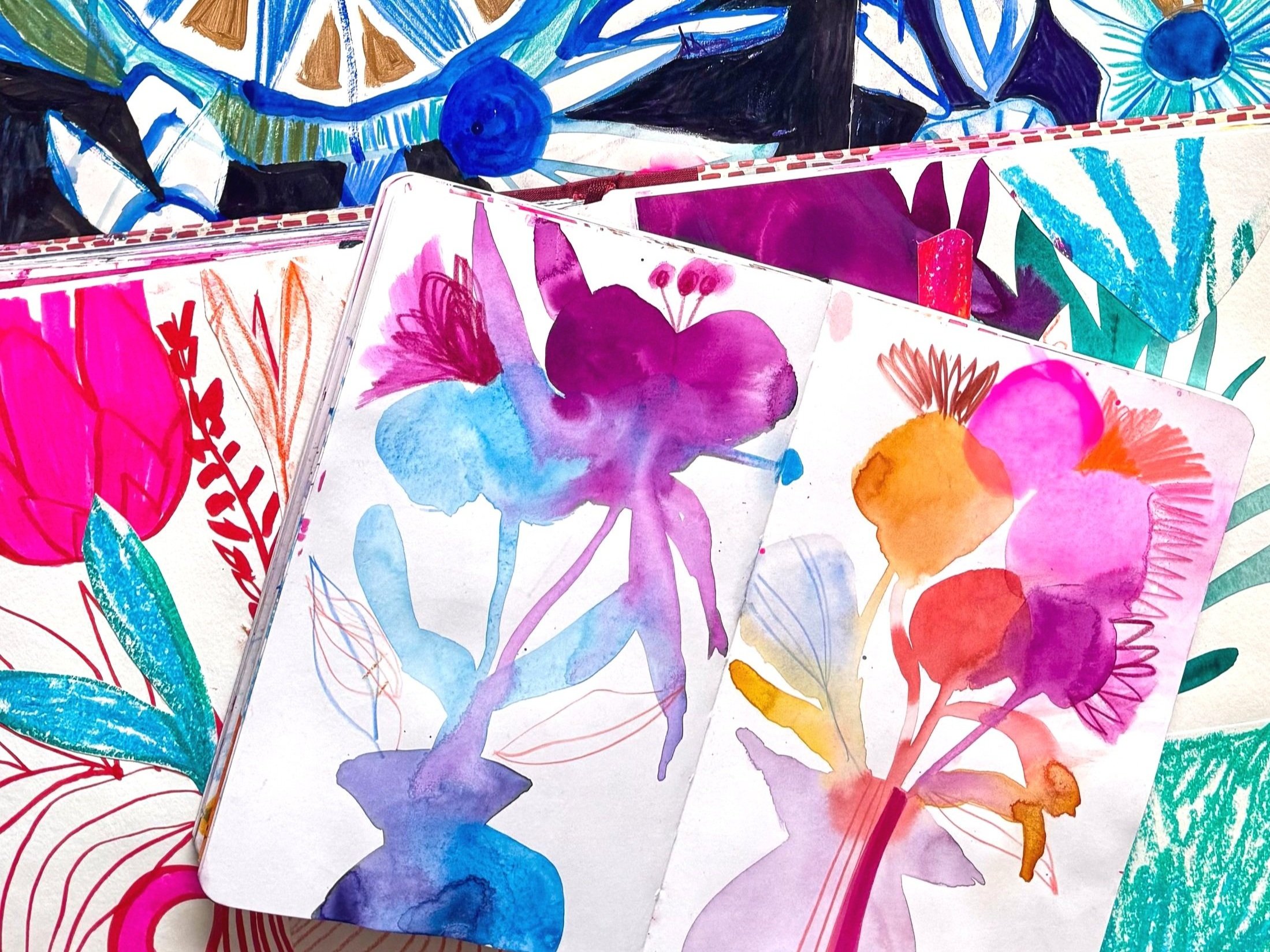
Art making ideasi
Ideas. Inspiration. A little creative mischief.
If you’re drawn to abstract and semi-abstract art, sketchbooks, colour and a little creative mischief, this is your corner of the internet.
Here you’ll find stories, videos, inspiration, art making advice and gentle nudges to help you create art that feels exciting to you.
Layering ideas
Thoughts on developing new ideas, sketchbooks and handmade sketchbooks made of old papers…
Balancing chaos and focus in art making
Here I share some thoughts on how creativity works…




